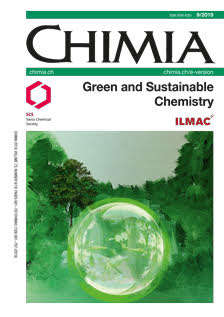Environmental Metrics to Drive a Cultural Change: Our Green Eco-Label
DOI:
https://doi.org/10.2533/chimia.2019.730PMID:
31514774Keywords:
Green chemistry, Metrics, SustainabilityAbstract
A novel Green Chemistry Process Scorecard was developed to assess the environmental impact of chemical production processes to manufacture the Active Pharmaceutical Ingredients (API) within our portfolio. These new metrics not only cover the resource consumption from the overall chemical synthesis, but also consider the use of Substances of Concern and the number of chemical transformations. The Process Mass Intensity (PMI), i.e. the ratio of accumulated kilogram quantities of materials per kilogram of API, is used to quantify the resource consumption. An 'eco-label' for specific APIs is used to visualize the environmental impact from their chemical synthesis. For an overview of the environmental impact of a complete product portfolio, a diagram of PMI or total waste quantity vs. the number of synthetic steps can also be used as a visualization tool to identify chemical syntheses with a high need for process improvements. Implementation of this process led to a dramatic change of mindset within the organization. It now supports and drives the decision making at Chemical and Analytical Development, and helps to trigger new projects more readily for sustainability reasons.Downloads
Published
2019-09-18
Issue
Section
Scientific Articles
License
Copyright (c) 2019 Swiss Chemical Society

This work is licensed under a Creative Commons Attribution-NonCommercial 4.0 International License.
How to Cite
[1]
Chimia 2019, 73, 730, DOI: 10.2533/chimia.2019.730.







